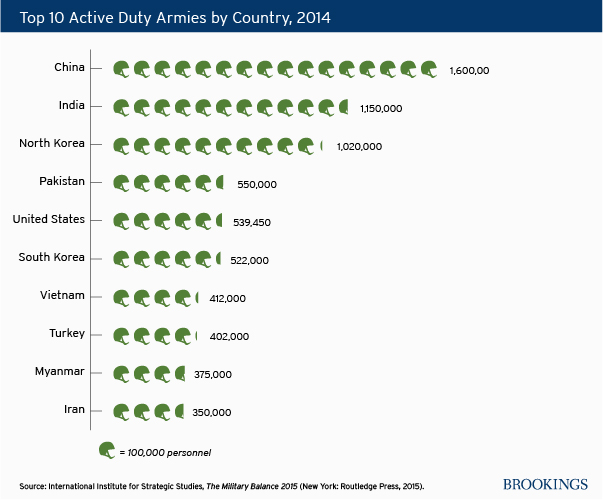In his new Brookings book, “The Future of Land Warfare”, Senior Fellow Michael O’Hanlon writes of what he calls “A major conceptual mistake,” namely that “Messy ground operations can be relegated to the dustbin of history.” He continues (in a recent blog post about the book):
That is a paraphrase and dramatization, to be sure—but only a modest one, since the administration’s 2012 and 2014 defense plans both state that the U.S. Army will no longer size its main combat forces with large-scale counterinsurgency and stabilization missions in mind.
“The cuts should stop,” O’Hanlon argues. In addition to counterinsurgency and stabilization missions, plus deterrent capability against Russian threats to NATO, and North Korean threats to South Korean, O’Hanlon says “we also need to think about nontraditional scenarios,” including possible nuclear escalation in a conflict between India and Pakistan.
Much has been said about the size of the U.S. military relative to other nations in the world, and the amount of money the U.S. spends on its military. The charts below show that while the overall U.S. military budget outstrips the rest of the world, the relative size of the United States Army does not.


Learn more about the book here. See also O’Hanlon’s recent participation in a Brookings event about budget turmoil in the U.S. Department of Defense.
The Brookings Institution is committed to quality, independence, and impact.
We are supported by a diverse array of funders. In line with our values and policies, each Brookings publication represents the sole views of its author(s).




Commentary
CHARTS: U.S. Army size and defense expenditures relative to other nations
October 14, 2015